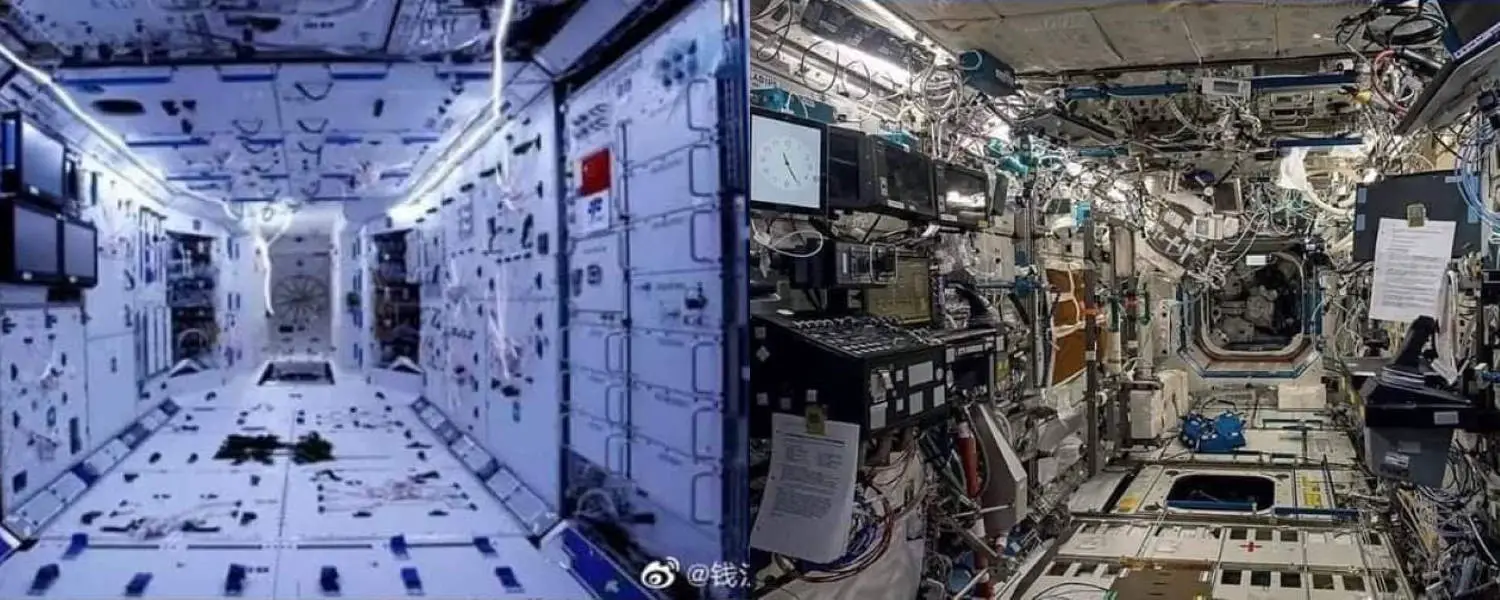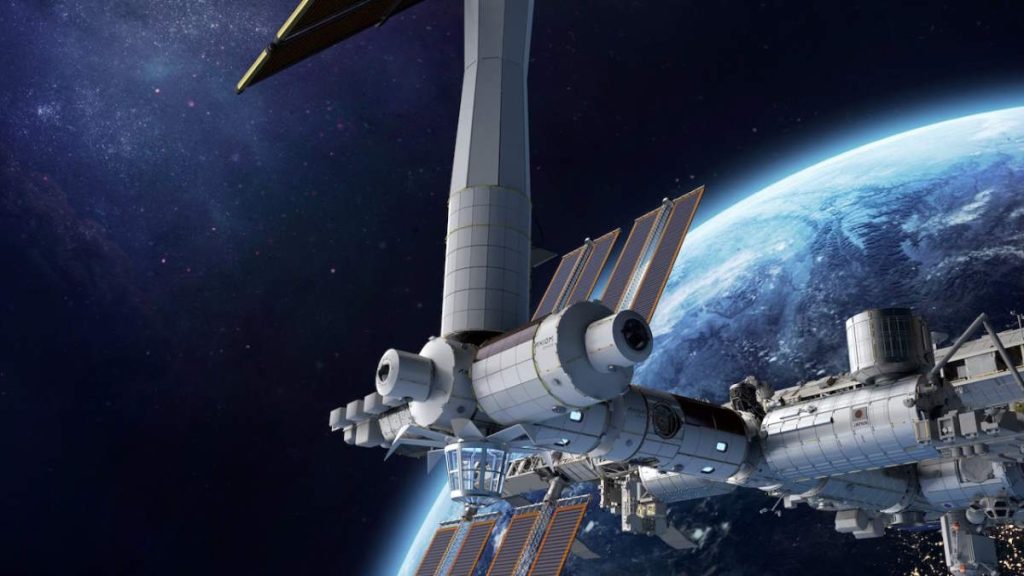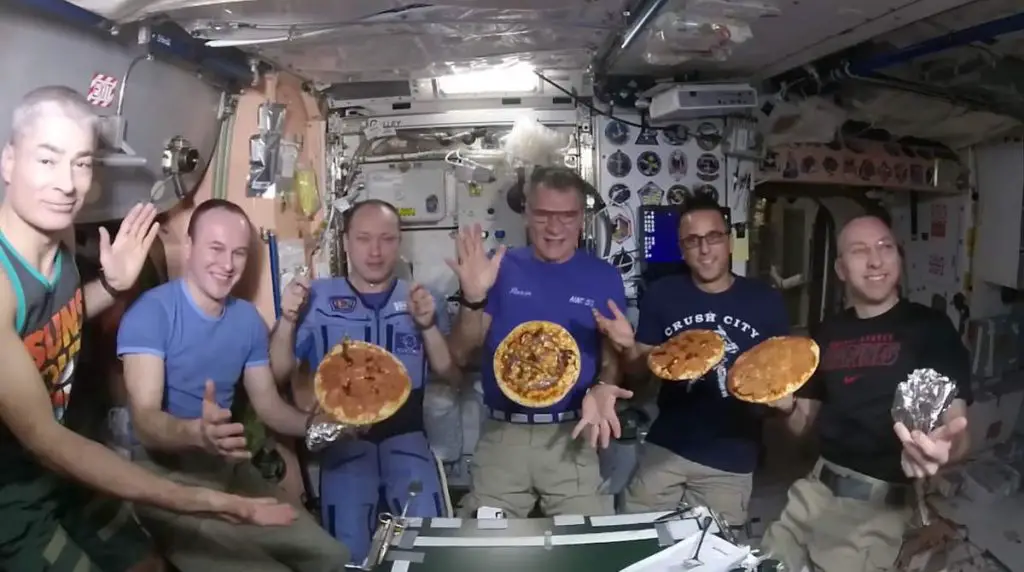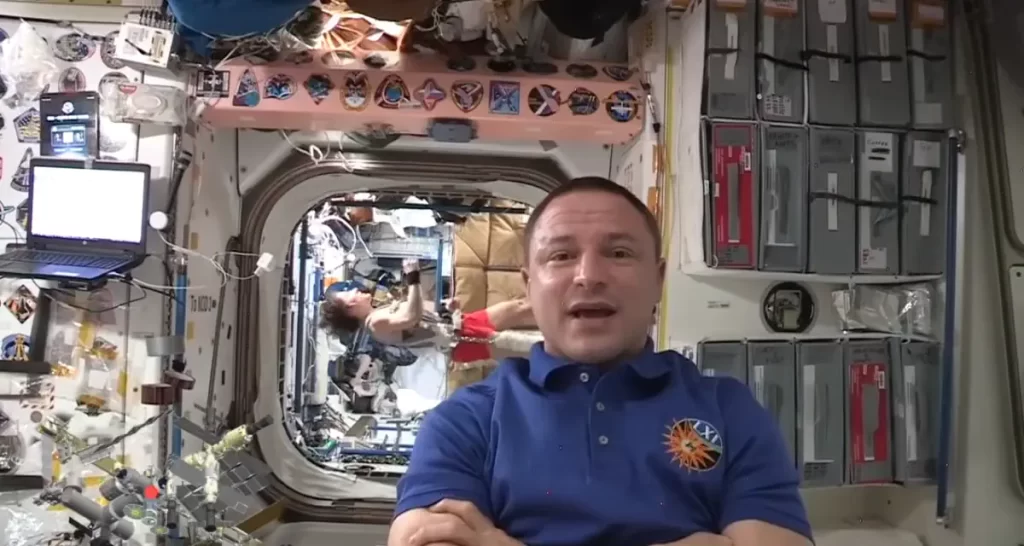Here’s an interesting side-by-side comparison of the interiors of China’s Tiangong space station vs the International Space Station (ISS). Tiangong looks way futuristic, that’s what actually future space stations look like in science-fiction movies. The good, old ISS clearly shows its age.
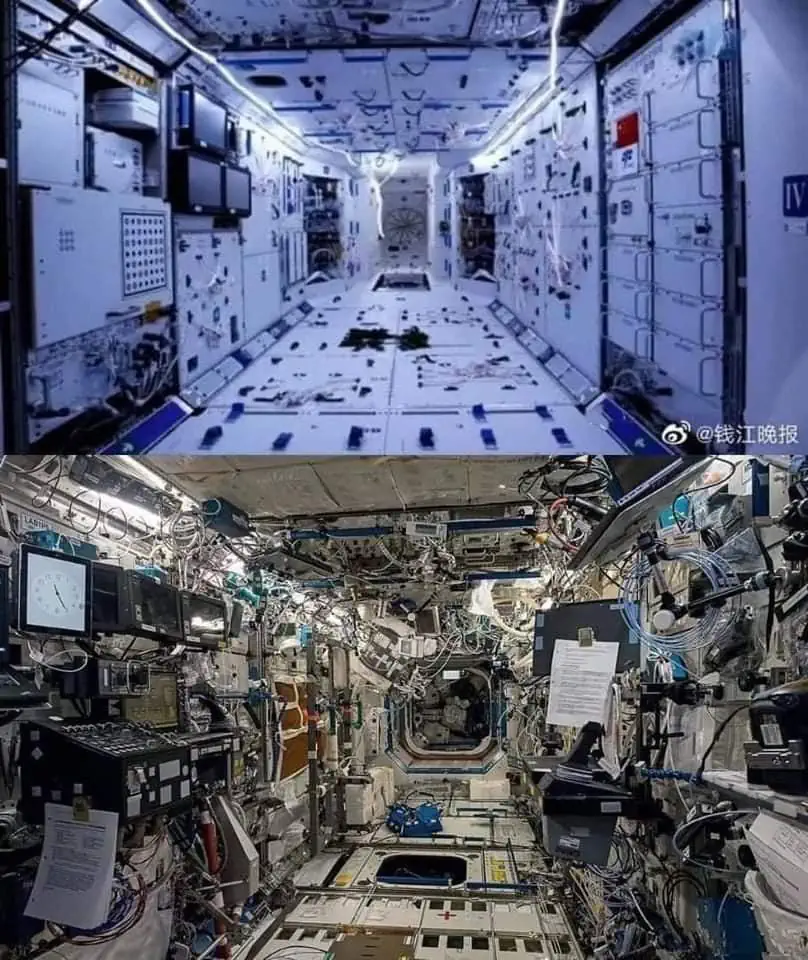
Tiangong space station
Tiangong space station is in low Earth orbit between 340 and 450 km (210 and 280 mi) above the surface. It is China’s first long-term space station. It has a mass of about 100 tonnes (220,000 lb), roughly one-fifth the mass of the International Space Station, and about the size of the decommissioned Russian Mir space station.
Tiangong’s interior looks way more futuristic than the ISS’, but that’s not the only difference. Other major differences include:
- Structure and size: Tiangong (which means “Heavenly Palace”) is much smaller than the International Space Station (ISS). It will have only three modules compared with 16 modules on the ISS. The three modules of Tiangong are:
- Tianhe core module
- Wentian Laboratory Cabin Module
- Mengtian Laboratory Cabin Module
- Weight: The Chinese space station will also be lighter than the ISS – it will be about between 80 and 100 tonnes in weight. The ISS weighs about 400 tons (450 metric tons) following the recent addition of Russia’s Nauka module.
- Docking Mechanisms: Tiangong is fitted with the Chinese Docking Mechanism, based on the Russian Androgynous Peripheral Attach System (APAS-89/APAS-95) system. The ISS has also APAS-95 docking ports, so both space stations’ docking systems should be compatible in theory. But, despite NASA describing the Chinese Docking Mechanism as a “clone” of APAS, rumors say that the two docking systems will not be fully compatible.
- Crew capacity: The regular size of the ISS crew is 6, but it has supported as many as 13 crew members onboard. The Chinese counterpart is currently equipped to handle three “taikonauts” (taikonaut is the combination of space Chinese – taiko, and sailor in Greece – naut).
- Noise: It seems the Tiangong will be quieter. The noise level in the working area is 58 decibels (dBA), while in the sleeping area, the noise is kept at 49 decibels. A moderate rainfall is 50 dBA, for example, and a normal conversation is 60 dBA. Acoustic levels at most locations on the International Space Station are close to 60 dBA, too, however, certain areas of the space station are particularly noisy and are a potential source of hearing loss for astronauts.
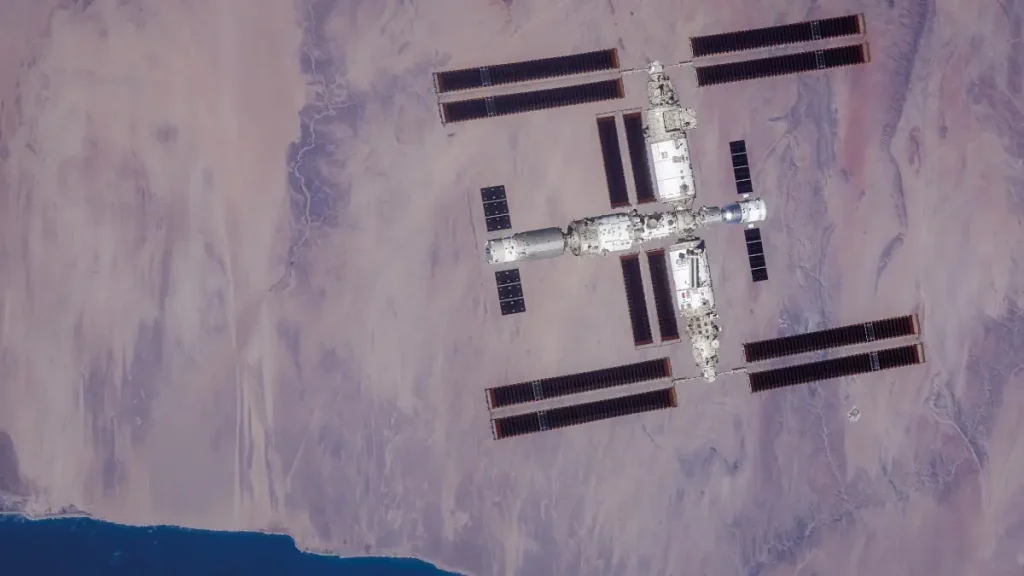
A third-generation space station
Tiangong will be a third-generation modular space station, like MIR or the ISS.
- First-generation space stations, such as early Salyut, Almaz (Russia), and Skylab (United States), were single-piece stations and not designed for resupply.
- The second generation, Russia’s Salyut 6 and 7, and China’s Tiangong 1 and 2 space stations, are designed for mid-mission resupply.
- Third-generation stations, such as Mir and the International Space Station, are modular space stations, assembled on-orbit from pieces launched separately.
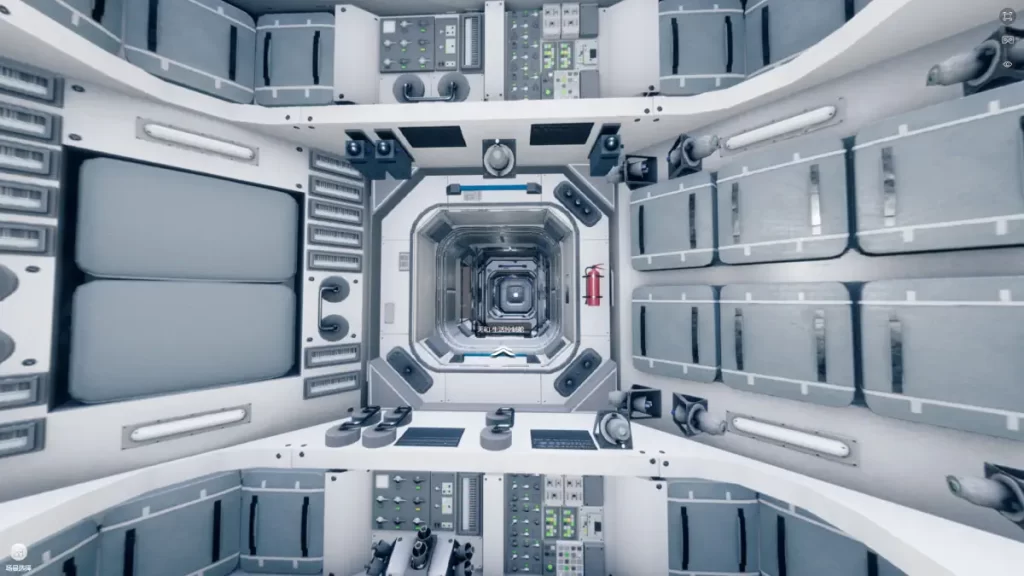
Life aboard the Tiangong space station
The core module of the space station, Tianhe provides living quarters for the crew members, containing three separate sleeping berths, a toilet, a shower facility, and gym equipment. At least one berth features a small window, a headphone, ventilation, and other amenities. Other properties and facilities include:
- The pressurized (habitable) volume is 122 m3 (4,308 cu ft).
- Neuromuscular electrical stimulators to prevent muscle atrophy.
- The noise level in the working area is 58 decibels, while in the sleeping area, the noise is kept at 49 decibels, as explained above.
- The Tiangong space station has a Wi-Fi network for wireless connection. Each astronaut wears a bone-conduction headphone and microphone for easy communication.
- 120 different types of food, selected based on astronauts’ preference, are stored aboard the Tiangong. Food storages are resupplied by trips of the Tianzhou-class cargo ship. Fresh fruits and vegetables are stored in coolers. Huang Weifen, chief astronaut trainer of CNSA, explains that most food is prepared to be solid, boneless, small-piece. Condiments such as pork sauce and Sichuan pepper sauce are used to compensate for the changes in the sense of taste in microgravity.
- The station is equipped with a small kitchen for food preparation and the first-ever microwave oven in spaceflight so that astronauts can “always have hot food whenever they need.”
- Taking a bath in microgravity is next to impossible, so the crew uses a spray gun before wiping themselves clean.
- There’s a space gym in the core module equipped with various workout equipment.
- All the taikonots have a handheld terminal connected to an app to switch cabin lightning between work, sleep, and exercise modes.
- A private voice channel has been reserved for the crew to call their families and friends on Earth from space.
- Like the ISS, various robotic arms are in use aboard Tiangong too. An ISS Canadian-style SSRMS robotic arm was folded under the Tianhe core module. Additionally, the Wentian experiment carries a duplicate stowed second SSRMS robotic arm. A Russian Lyappa arm for dockings and relocations, and also a 10-meter-long robotic arm for exterior station operations (spacewalks) mounted on the Tianhe module.
Sources
- “China has launched the first section of its Tiangong modular space station, which will take shape over the coming year” on the Sky & Telescope website
- “China’s Tiangong space station” on Space.com
- “Here’s How the Chinese Tiangong Space Station Compares to the ISS” on the Interesting Engineering website
- Tiangong space station on Wikipedia
- International Space Station on Wikipedia
- “The space-flight environment: the International Space Station and beyond” on the US National Library of Medicine National Institutes of Health website
- Moon Landings: All-Time List [1966-2025] - February 2, 2025
- What Is Max-Q and Why Is It Important During Rocket Launches? - January 16, 2025
- Top 10 Tallest Rockets Ever Launched [2025 Update] - January 16, 2025
